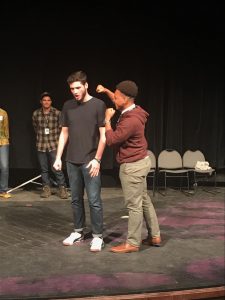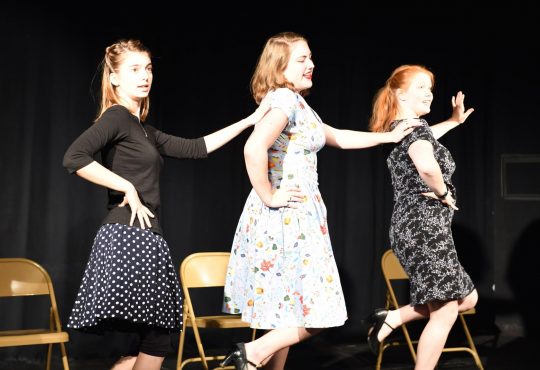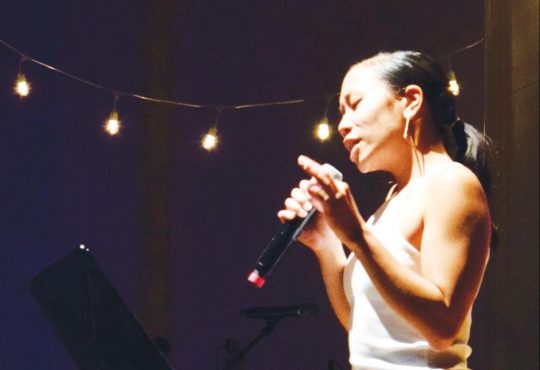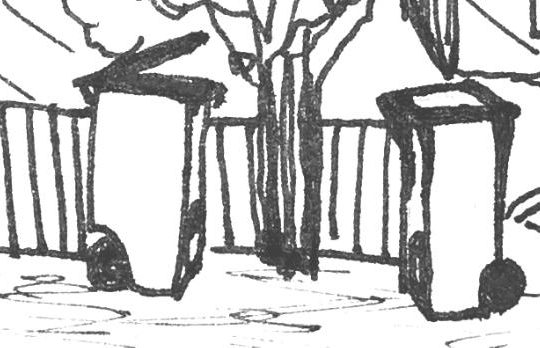

“You don’t need to be an actor to do this. All you need to do is speak your truth,” Marc Weinblatt, director of “Theater of the Oppressed: Interactive Performance and Dialogue on Race” at the 2018 Race and Pedagogy National Conference (RPNC), said.
Dialogues about race can take a wide range of forms, including theater. On Sept. 28 at 10:30 a.m., as part of the RPNC, a Spotlight Session on Theater of the Oppressed was held.
According to Weinblatt, Theater of the Oppressed is a form of theater that was invented in Brazil by Augusto Boal in the 1970s. The form is designed to promote social and political change by deeply engaging the audience and unpacking or reworking real-life scenarios. This particular interactive performance was framed within the structure of “The Rainbow of Desire.”
“The Rainbow of Desire is designed to deconstruct a scene of tension between two people to show some of the complexities of what might be going on below the surface. It’s not a problem-solving structure; in fact it may complicate things,” Weinblatt said.
The form that Theater of the Oppressed works with does not require acting experience — it requires the examination of basic human experience.
“Theater of the Oppressed was very much designed for non-actors; it is popular theater, popular education, removing it from the realms of professionals and giving it back to the people, where acting started,” Weinblatt said. “The majority of people I work with for Theater of the Oppressed are non-theater people, many of whom would not be caught dead on this stage.”
The actual performance was only about a minute and a half long. Two actors, alumna Chantel Dozier ‘16 and current senior Jack Aldisert took the stage and played out a scene. Aldisert portrayed a white male employer named Mr. Taylor and Dozier played a newly hired black woman named Brie. Mr. Taylor concerningly fumbled his way through a brutal conversation with his new employee where he asked her to educate him on race and how to better communicate with “people like” her.
It is important to remember that in this scene there were obvious racial issues at play but there were also issues of gender and the employee-employer power dynamic. Intersectionality is always a part of these interactions.
“As a predominantly white, arguably neoliberal campus, I think a lot of white students have felt like Mr. Taylor even if we don’t necessarily act that explicitly. And I think on campus in general, we are really capable of running into those uncomfortable situations. … I thought this was a really healthy way of working to dismantle microaggressions,” Georgia Gustavson, a Masters of Art and Teaching student at the University, said.
After the scene ended and the audience cringed in unison, Weinblatt invited audience members to act out “shapes” of feelings that both characters might be experiencing. The end result was a visual representation of a complex tapestry (or rainbow) of different emotions for both characters. Postures of anger, sadness, fear, humor, exhaustion, and many others were all seen at once.
The audience then continued to play out mini scenes with both actors to further explore their feelings. For example, one woman’s “shape” took the form of her hand covering Mr. Taylor’s mouth. She proceeded to enter the scene by saying: “Not today, white boy. I had a whole day of hearing ignorant white men talk yesterday [referring to the Kavanaugh hearing] and I don’t need it today.”
Another woman held out her arms at Mr. Taylor to represent the character of Brie’s frustration. This allowed for everyone in Norton Clapp Theater to see the kinds of emotions an interaction like this could elicit.
“We want everyone to empathize for the people whose experiences they don’t understand, try to get them to come to a better understanding of how they might feel in the situation. Sometimes literally, where we have an audience member come up and portray one of them,” Aldisert said.
“We also want people to empathize with themselves,” Aldisert continued. “The nature of the exploration is: what are the many sides that this one person could be experiencing beneath the surface, that the character could be feeling, whether they know they are feeling it or not?”
The experience was educational and complex and the audience approached the challenge of difficult conversation with grace. People were not afraid to use humor to point at some of the absurd aspects of the initial scene. The exercise as a whole illuminated the Puget Sound community’s ability to have compassion in difficult real-life, scenarios.
“They tapped into emotions I didn’t anticipate but really struck a chord when they were expressed. I think the space we were given as audience members to contemplate the performance of emotions before and as they happened really put us into a headspace of inquiry, curiosity and rumination,” Gustavson said.






